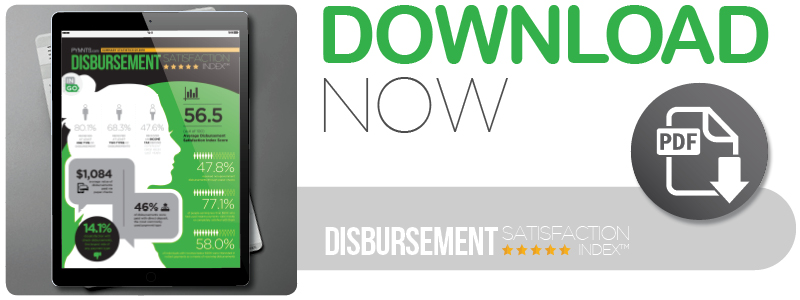FEMA On Disbursing Emergency Aid To Victims

Nearly 25 million Americans were affected by wildfires, hurricanes or floods last year, making 2017 one of the worst years on record for weather disasters. Alex Amparo, FEMA’s director of external affairs, speaks with PYMNTS about how the agency uses several different payment methods to get emergency relief funds into victims’ hands.
The year 2017 was one of the worst years on record for weather disasters — just ask the Federal Emergency Management Agency (FEMA), which mobilizes when disaster strikes.
From wildfires in California to hurricanes Harvey, Irma and Maria, a total of 59 major natural disasters struck the U.S. and upended the lives of nearly 25 million Americans last year, according to FEMA’s latest figures. These events not only damaged personal property and public infrastructure, but inflicted a significant financial toll on local communities. In fact, FEMA paid more than $7.2 billion in disaster relief to residents and municipalities through individual and public assistance programs.
For those impacted by natural disasters, accessing relief funds is an important step in rebuilding their disrupted lives. As Alex Amparo, FEMA’s director of external affairs, recently explained to PYMNTS for the Disbursement Index™ feature story, the agency uses several payment methods to get emergency relief funds into victims’ hands. He spoke in depth about the payment tools FEMA uses to help victims on the path to recovery, the record-setting year for disasters and how digital tools help speed up emergency funds’ delivery.
Delivering Assistance Via Debit
As if hurricanes, tornadoes and floods aren’t bad enough, the destruction caused can also make it challenging for victims to receive aid. Displaced residents can’t always receive paper checks in the mail, and they aren’t able to use their bank accounts or withdraw cash from ATMs if electricity gets knocked out.
As such, FEMA uses various options to get financial aid to impacted residents, including paper checks, electronic fund transfers (EFTs) and direct deposit to bank accounts or recipients’ debit cards. Debit cards and direct deposit hold several advantages over paper checks, Amparo noted, as quickly receiving funds into bank accounts or on cards spares applicants from waiting by their mailboxes — assuming the mailboxes are still standing or even accessible.
Supplying funds on debit cards is also valuable for getting financial assistance to unbanked or underbanked residents, he added.
“We have seen there are many [residents who] may not have a bank account,” Amparo said. “They can provide us with a debit card [on which] we can load the dollars.”
FEMA delivers financial assistance to approved applicants using their method of choice, but digital payments make it more efficient for survivors to get the funds they need to get back on their feet.
“We want to be able to work as quickly as possible to get resources into the hands of disaster survivors,” Amparo said. “So, to that degree, if that’s done quicker by debit card, that’s an important avenue we want to maintain for [them].”
Quick Disbursements Following Validation
One of the most important steps in delivering emergency aid is ensuring that funds are delivered to the correct parties, Amparo said. FEMA employs a rigorous verification system to guarantee it only delivers money to the right recipients, which can involve checking government identifications, Social Security numbers and running property searches through databases like LexisNexis. The agency also uses two-factor authentication, such as providing a code to an email address or phone number.
In some cases, once a FEMA inspector reviews their property damage, disaster victims can immediately be approved for and receive funds electronically on-site.
“We’ve had occasions where an inspector was still at a residence of a disaster survivor [and] had transmitted the inspection report to our processing center,” Amparo explained. “The processing center had validated information through our automated checks in certain areas, and an electronic transfer was provided before he left. That’s the level of service we strive for.”
A More Transparent Set Of Tools
Electronic tools are not only a resource for aiding disaster survivors, but also help FEMA more efficiently track spending to ensure disaster funds are not improperly allocated, Amparo added. The agency is required by law to keep its improper payment rate — payments that should not have been made, or that were issued for an incorrect amount — to less than 1.5 percent per year. It has, so far, been successful in staying below this legal threshold, and digital tools help by reducing the potential for human error in manual processing.
“These tools help us as part of an automation process,” Amparo said.
Greater automation also allows FEMA to more quickly scale services to address disaster victims’ needs, notably those who register for assistance online.
“The fact that they’re registering online, and we’re doing EFT and not many manual transactions, allows us to provide a greater level of service, a quicker level of service [and] a more correct level of service than we would without those [factors],” Amparo added.
A ‘Banner Year’ For Disasters
The number of households that registered for FEMA’s Individual Assistance Program for disaster relief reached 4.7 million in 2017, a level of activity never before seen in the agency’s history. It also paid out more than $8 billion through its flood insurance program.
“That was a banner year,” Amparo said. “Nothing else has compared to-scale.”
FEMA mobilized to respond to these disasters upon federal declaration, and will do so again as new disasters emerge. No one knows when or where that next disaster will strike, though, and Amparo advises the importance of being equipped for the unknown.
“Our first and foremost message is to be financially prepared,” he said, noting that a recent Federal Reserve study found approximately 40 percent of Americans do not have $400 set aside for an unexpected expense. “FEMA encourages people to have bank accounts. I believe that leads to a better financial situation for many families.”
While FEMA will issue disaster funds through any preferred payment method, simply having a bank account will put households on more stable financial footing — and ready them to electronically receive potential disaster aid.

